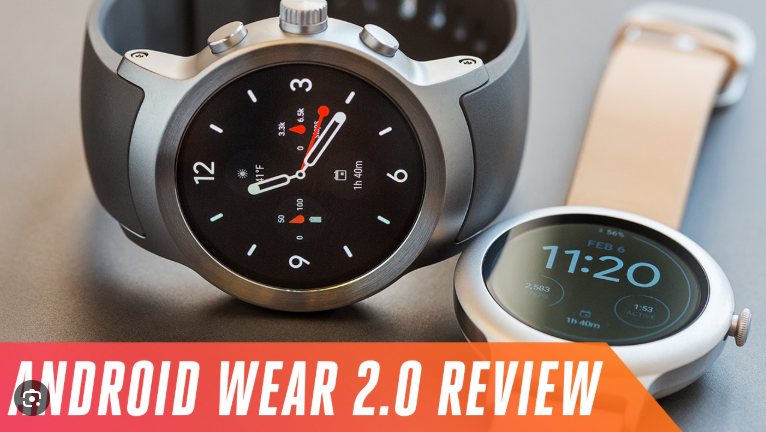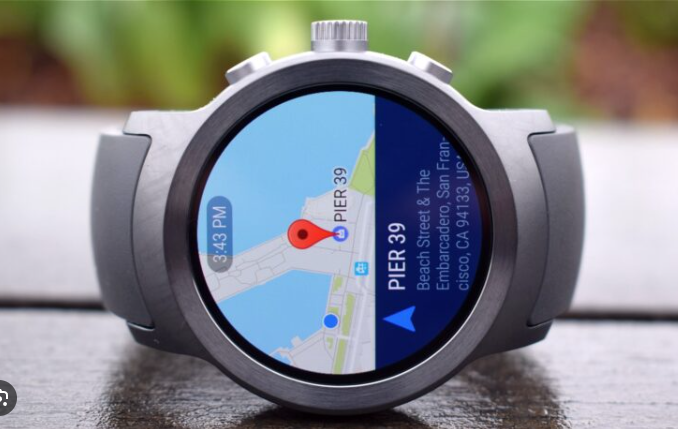Choosing between a smartwatch vs smartband can be a tough decision, especially with the wide array of wearables available in 2025. Both devices offer fitness tracking, notifications, and smartphone connectivity, but their purposes, designs, and features differ significantly. This comprehensive smartwatch vs smartband comparison explores the key differences, benefits, and drawbacks to help you decide which is best for your lifestyle. From smartwatch setup to smartwatch maintenance, we’ll cover everything you need to make an informed choice. Whether you’re a fitness enthusiast, a professional, or a casual user, this smartwatch guide will clarify the best smartwatch guide for your needs in 2025.
Why Compare Smartwatch vs Smartband?
Smartwatches and smartbands are popular wearables, but they cater to different needs. A smartwatch acts as an extension of your smartphone, offering advanced features like app support and calling, while a smartband focuses on fitness tracking with a simpler design. With smartwatch shipments projected to grow by 11% in 2025, understanding the smartwatch vs smartband debate is crucial for picking the right device. This guide highlights their differences, drawing on insights from sources like Dignited and Croma Unboxed, to help you choose based on functionality, style, and budget.
Key Differences: Smartwatch vs Smartband
Before diving into specific models, let’s break down the core differences in the smartwatch vs smartband comparison to understand their strengths and limitations.
1. Design and Build
- Smartwatch: Designed to resemble traditional watches, smartwatches feature larger, vibrant displays (1–3 inches) with touchscreen navigation. They often use premium materials like stainless steel, titanium, or sapphire crystal (e.g., Apple Watch Ultra 2, Samsung Galaxy Watch 8). Interchangeable straps (leather, stainless steel, silicone) make them versatile for casual, professional, or formal settings.
- Smartband: Sleeker and lighter, smartbands have smaller, narrower displays (0–1 inch) and simpler designs, often with rubber or silicone straps. They’re less obtrusive, ideal for fitness-focused users or those who prefer minimalism (e.g., Fitbit Inspire 3, Amazfit Band 7). Their compact build enhances comfort during workouts or sleep.
2. Features and Functionality
- Smartwatch: Acts as a smartphone extension, offering notifications, calls, texts, and third-party apps via app stores (e.g., Apple App Store, Google Play Store). Features include GPS, ECG, blood oxygen monitoring, and voice assistants (Siri, Google Gemini). Many support LTE for phone-free use, making them ideal for multitasking.
- Smartband: Focuses on fitness tracking with sensors for steps, heart rate, sleep, and sometimes SpO2 or stress. Advanced models (e.g., Xiaomi Smart Band 8) offer notifications and basic apps, but they lack the robust app ecosystems of smartwatches. They’re designed for simplicity and health-focused users.
3. Battery Life
- Smartwatch: Due to larger displays and complex features, smartwatches typically require daily charging (18–48 hours, e.g., Apple Watch Series 10, Samsung Galaxy Watch 8). Some premium models like the Samsung Galaxy Watch Ultra last up to 100 hours.
- Smartband: Known for excellent battery life (5–14 days) due to smaller screens and lighter operating systems. For example, the Fitbit Inspire 3 lasts up to 10 days, making it a low-maintenance portable smartwatch.
4. Price
- Smartwatch: Prices range from $150 (e.g., Samsung Galaxy Watch FE) to over $800 (e.g., Apple Watch Ultra 2). Higher costs reflect advanced features, materials, and LTE options.
- Smartband: More affordable, starting at $40 (e.g., Amazfit Band 7) and rarely exceeding $200 (e.g., Fitbit Charge 6). They’re a budget-friendly choice for fitness-focused users.

Top Smartwatches and Smartbands in 2025
This smartwatch vs smartband comparison highlights top models to illustrate their differences, tested for performance, usability, and value.
Top Smartwatches
1. Apple Watch Series 10
Price: Starting at $399
Why Choose It: The Apple Watch Series 10 is a top smartwatch for iPhone users, featuring a 2,000-nit OLED display, ECG, sleep apnea detection, and LTE options. Its 42mm/46mm titanium or aluminum case and watchOS 11 offer seamless notifications, calls, and apps like Todoist.
Best For: Professionals and iPhone users needing a versatile device.
Drawbacks: 18-hour battery life requires daily charging; iPhone-only.
2. Samsung Galaxy Watch 8
Price: Starting at $349.99
Why Choose It: The best Android smartwatch, with a 1.5” AMOLED display, Wear OS 6, and Galaxy AI features like Running Coach. It supports ECG, blood oxygen, and LTE, with a 48-hour battery life.
Best For: Android users seeking a smartphone-like experience.
Drawbacks: Some features require a Samsung phone.
Top Smartbands
1. Fitbit Charge 6
Price: Starting at $159.95
Why Choose It: The Fitbit Charge 6 is a top smartband with a 1.04” AMOLED display, 7-day battery life, and advanced fitness tracking (heart rate, SpO2, ECG). It supports Google Wallet and notifications, ideal for fitness-focused users.
Best For: Budget-conscious users prioritizing health tracking.
Drawbacks: Limited app support; no LTE.
2. Amazfit Band 7
Price: Starting at $49.99
Why Choose It: A budget-friendly smartband with a 1.47” AMOLED display, 18-day battery life, and 120+ sport modes. It tracks heart rate, sleep, and stress, with basic notifications and Alexa integration.
Best For: Casual users needing affordable fitness tracking.
Drawbacks: Basic smart features; no calling.
When to Choose a Smartwatch vs Smartband
This smartwatch vs smartband comparison helps you decide based on your needs:
- Choose a Smartwatch If:
- You want a smartphone-like experience with calls, texts, and apps.
- You need advanced health features like ECG or sleep apnea detection.
- You prefer a stylish design for daily wear, with customizable straps for professional or formal settings.
- You use LTE for phone-free connectivity (e.g., during travel or workouts).
- Choose a Smartband If:
- You focus on fitness tracking (steps, heart rate, sleep) and don’t need extensive smart features.
- You prefer a lightweight, discreet design for workouts or sleep.
- You want long battery life (5–18 days) to minimize charging.
- You’re on a budget, with prices starting as low as $40.
Tip: For detailed comparisons, visit smartwatchus.com for a comprehensive wearable guide.
How to Set Up Your Smartwatch or Smartband
Learning how to use a smartwatch or smartband starts with proper setup to ensure seamless connectivity and functionality.
-
- Charge the Device: Use the manufacturer’s charger (e.g., magnetic puck for Apple Watch, wireless pad for Samsung) to fully charge before pairing.
- Download the App: Install the companion app (e.g., Apple Watch app, Samsung Wearable, Fitbit app, Zepp app) on your phone (iOS 18+, Android 9.0+).
- Pair via Bluetooth: Enable Bluetooth and follow app prompts to pair. For example, scan a QR code for Apple Watch or select your device in the Fitbit app.
- Customize Settings: Set up notifications, health tracking, and watch faces via the app.
Troubleshooting Tip: For smartwatch troubleshooting, restart both devices if pairing fails, and ensure Bluetooth is within 30 feet.
Smartwatch Maintenance and Cleaning
Keep your device in top shape with these smartwatch maintenance tips:
- Cleaning: For smartwatch cleaning, wipe with a microfiber cloth. Rinse 5ATM+ models with fresh water after sweating or swimming, avoiding soaps.
- Strap Care: Clean silicone straps with water; use leather-specific cleaners for premium bands. Replace worn straps for comfort.
- Protection: Avoid extreme temperatures and drops to protect displays and sensors.
- Battery Health: Charge between 20–80% and store in a cool, dry place to extend battery life.

Smartwatch Safety Tips
Ensure safe use with these smartwatch safety practices:
- Skin Health: Loosen the strap or switch to hypoallergenic bands if irritation occurs.
- Data Privacy: Secure health and location data with a PIN and review app permissions.
- Charging Safety: Use the manufacturer’s charger and avoid charging in humid conditions.
Conclusion: Smartwatch vs Smartband – Which Should You Choose?
In this smartwatch vs smartband comparison, the right choice depends on your priorities. A smartwatch like the Apple Watch Series 10 or Samsung Galaxy Watch 8 is ideal for those seeking a smartphone-like experience with advanced features, stylish designs, and LTE connectivity, though they require frequent charging. A smartband like the Fitbit Charge 6 or Amazfit Band 7 suits fitness-focused users who value simplicity, long battery life, and affordability, but they lack robust smart features. Follow our smartwatch tips for setup, maintenance, and safety to maximize your device’s potential. For more insights, explore maintenance tips at smartwatchus.com, your ultimate best smartwatch guide. Decide between a smartwatch vs smartband in 2025 to find the perfect wearable for your lifestyle.